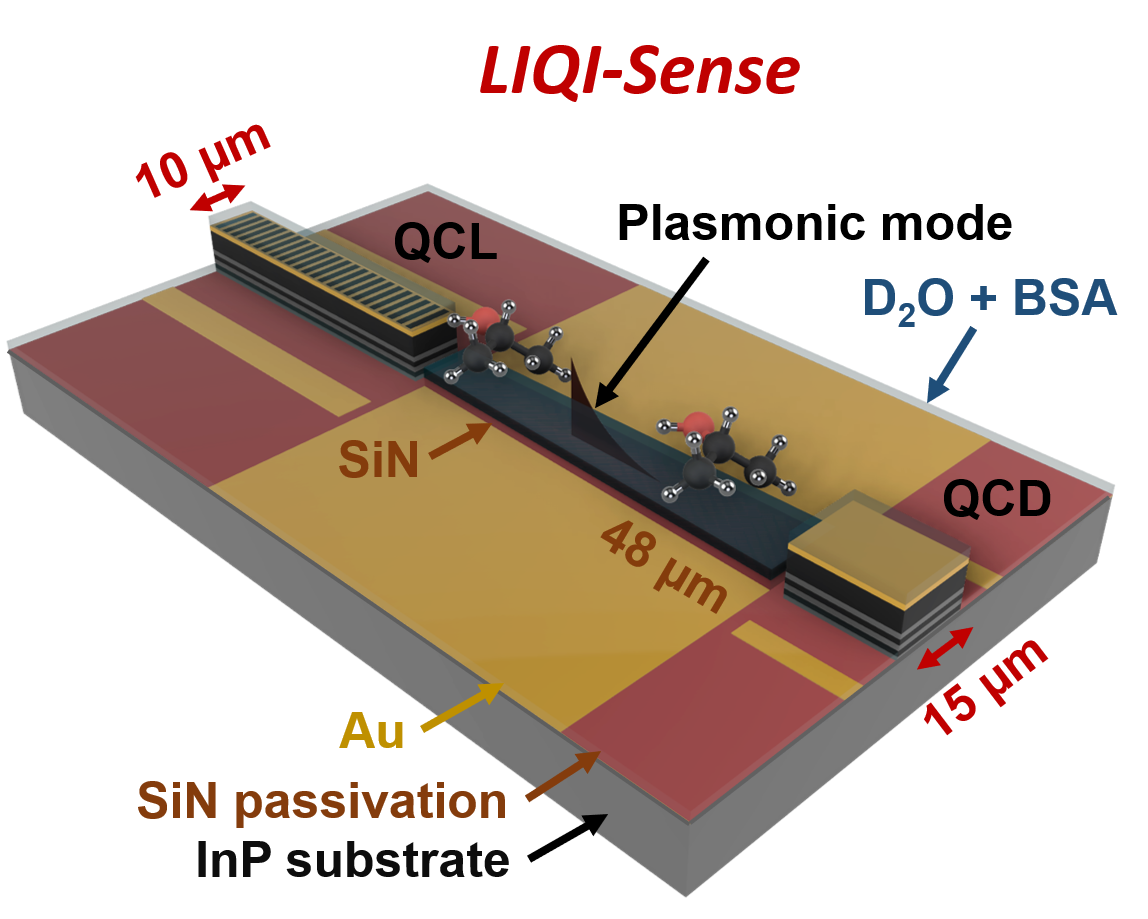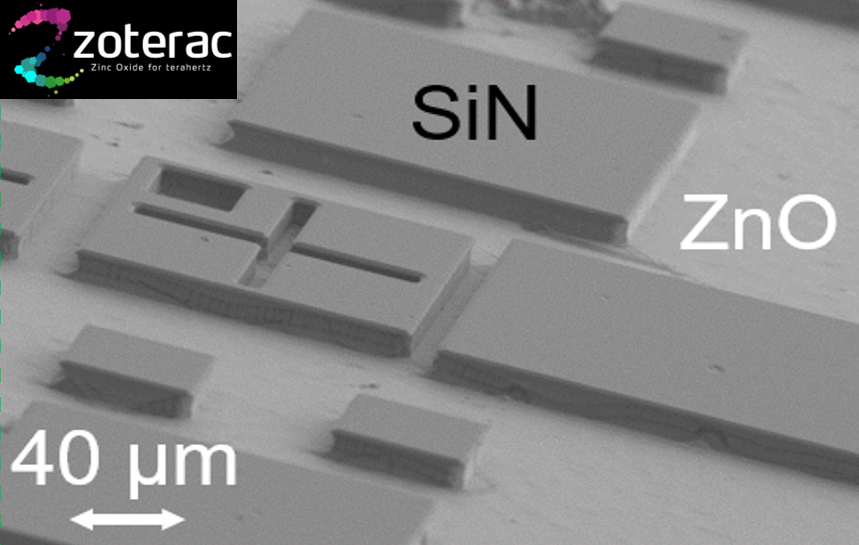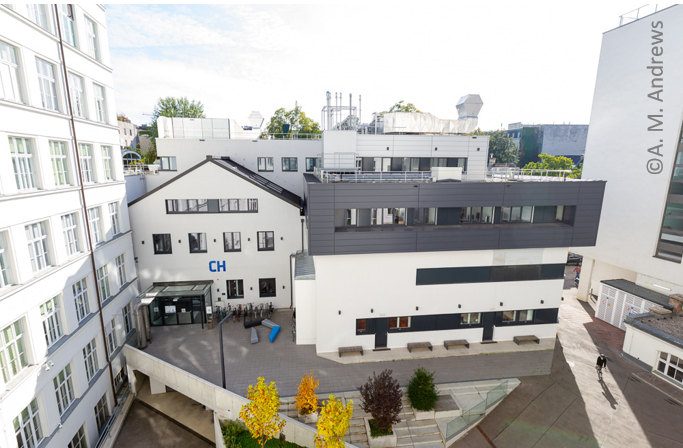Optoelectronics. Technology. Applications.
Modern mid-IR optoelectronic devices: from design, to fabrication and application
Our Mission
Welcome to the website of the sub-group Hinkov „Optoelectronic Devices & Applications“, as part of the Chair of „Optoelectronic Materials“, Institute of Solid State Electronics and Center for Micro- and Nanostructures at TU Wien (Vienna, Austria). Our research activities as sub-group of the activities of Prof. Gottfried Strasser lie in the fields of optoelectronic devices, fabrication and applications. The current focus is on novel photonic integrated circuits (PICs) and networks for applications in gas and liquid sensing and free-space optical communication. For this task we exploit mid-infrared to THz quantum/interband cascade devices and technology.
The website is partly still under construction.
Our Mission
Welcome to the website of the sub-group Hinkov „Optoelectronic Devices & Applications, as part of the Chair of „Optoelectronic Materials“, Institute of Solid State Electronics and Center for Micro- and Nanostructures at TU Wien (Vienna, Austria). Our research activities as sub-group of the activities of Prof. Gottfried Strasser lie in the fields of optoelectronic devices, fabrication and applications. The current focus is on novel photonic integrated circuits (PICs) and networks for applications in gas and liquid sensing and free-space optical communication. For this task we exploit mid-infrared to THz quantum/interband cascade devices and technology.
The website is partly still under construction.
Current Research Highlights
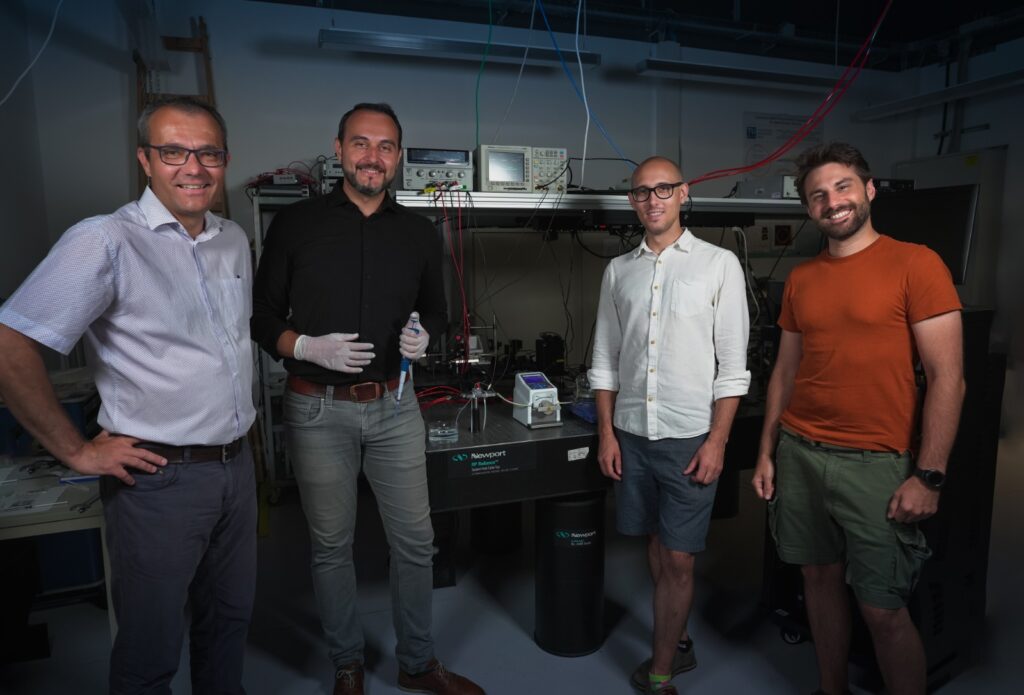
Research Highlight TU Wien Website
30. August 2022
Our latest article, published in Nature Communications was featured in the news section of the TU Wien website. Especially, the interdisciplinary aspect of the work was highlighted, bringing together scientists from the fields of optoelectronics, material science and analytical chemistry.
Elena Wins 3rd Best Paper Award at IQCLSW 2022
27. August 2022
Very proud of Elena for winning one of the awards at this years International Quantum Cascade Laser School and Workshop in Zurich / Monte Verità. While still in her 1st year she very successfully presented our groups latest results on Polyethylene-based plasmonic waveguides for integrated photonics and on-chip mode guiding.


Article Published in Nature Communications
13. August 2022
The work on our finger-tip sized sensor for in situ reaction monitoring of liquids in real time got published today in Nature Communications. Great collaboration with the group of Benedikt Schwarz (also TUW-FKE) and Bernhard Lendl (TUW – analytical chemistry).
Best Paper Award at PLASMONICA Workshop in Torino
08. July 2022
Very happy to receive the best poster award at the PLASMONICA School & Workshop, presenting the group activities on the application of fully monolithic mid-IR liquid sensors for dynamic reaction monitoring. A big shoutout to all co-authors for their valuable contributions in this work.

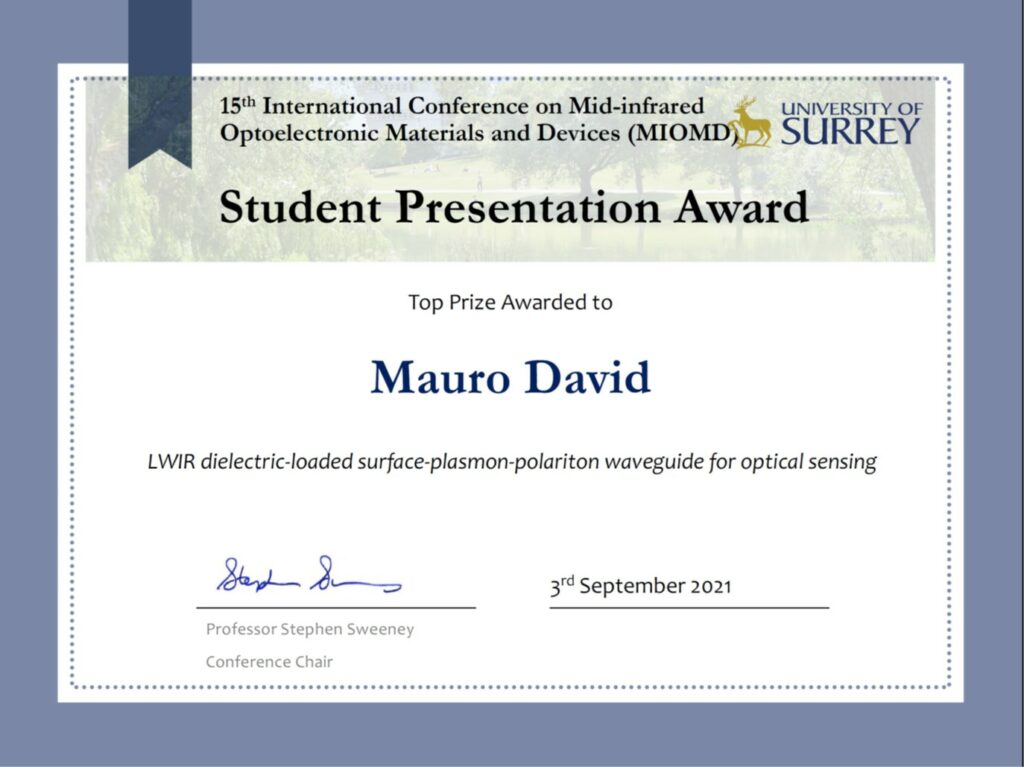
Student Presentation Award for Mauro at MIOMOD Conference
03. September 2021
Very proud of Mauro for being awarded the Student Presentation Award at MIOMD 2021 for his work on dielectric-loaded surface-plasmon-polariton waveguides in the long-wave infrared spectral region. A great pleasure to see, that the hard work paid off. Well deserved, congratulations Mauro!
Latest Research Projects
Interested in our research activities within different projects? As sub-group of the Chair "Optoelectronic Materials", we were and are part of project activities lead by Prof. Gottfried Strasser. Find a brief summary of recent projects below. More details in the research section.
EU H2020 "cFlow"
A vast potential for high-end photonic applications remains untapped in the Long Wave InfraRed region of the electromagnetic spectrum (LWIR, 8-12 μm). In particular, Free Space Optical (FSO) communication using LWIR wavelengths promises unmatched availability and speed compared to telecom and RF links, due to extremely low sensitivity to atmospheric perturbations. The cFLOW project will bring photonic integrated circuit concepts to Quantum Cascade Lasers and Detectors (QCL & QCD) technology in order to establish a scientific and technological landmark for LWIR FSOs. The goal is to demonstrate a coherent transmission with datarates in the 20-100 Gbps range, based on devices operating at room-temperature featuring:
(i) a “telecom ready” LWIR QCL chip with record modulation speed (>20GHz), 100% modulation depth, tens to hundreds of mW output power and low RF power consumption.
(ii) a high-speed (>20 GHz) heterodyne sensor with a sensitivity three orders of magnitude higher than current solutions. The success of the cFLOW project will completely redefine potential architectures for the wireless communications networks of the 21st century.
FWF Lise-Meitner Scholarship
"LIQI-Sense"
Mid-infrared spectroscopy is a very powerful technique for sensitive and selective molecule detection by adressing their fundamental fingerprint absorptions. However, the mid-infrared analysis of liquids is still in its infancy and often limited to time-consuming offline analytics using bulky equipment. This is due to the missing integration concepts for combining mid-infrared optoelectronic devices with suitable spectroscopic capabilities to realize chip-scale sensors.
In LIQI-Sense we explore photonic integration concepts based on novel mid-infrared plasmonic concepts integrated with advanced optoelectronic devices, exploiting so-called bi-functional quantum cascade lasers & detectors (QCLDs). This enables a pathway for the next generation of photonic integrated circuits (PICs) for spectroscopic applications in liquids. They are characterized by miniaturized device footprint, highly sensitive and selective molecule detection and capabilities in real-time analysis of chemical reactions in the liquid samples.
EU H2020 "ZOTERAC"
The terahertz (THz) spectral region, located between the mid-infrared and the microwave regions, is known as “the THz gap” because of the lack of compact semiconductor devices. This spectral domain is currently intensively explored in view of its potential for medical diagnostics, security screening, trace molecule sensing and wireless communications. A prerequisite for public-domain applications to emerge in the strategic THz frequency range is the availability of compact-size semiconductor sources operating at room temperature. This is out of range of the current technology based on GaAs quantum cascade lasers. ZOTERAC proposes a disruptive approach based on ZnO-based nano-engineered semiconductors in order to realize THz optoelectronic devices. This includes emitters operating at room-temperature with milliWatt output power capability as well as THz quantum detectors with unprecedented large operating temperatures. These devices are based on the quantum cascade concept and take benefit of the large optical phonon energy of ZnO (twice that of GaAs) for achieving high temperature operation.
Major challenges of ZOTERAC include establishing a new state-of-the-art for the design, growth and processing of ZnO/ZnMgO heterostructures and developing an advanced know-how on oxide-based devices in general. The project relies on a strong expertize in basic physics, chemistry and engineering.
Open Positions
We have various Bachelor- and Master Thesis topics available on the topics of mid-infrared quantum optoelectronic devices, plasmonics and photonic integrated circuits and applications in the spectroscopy of liquids and in optical free-space telecommunication. Just write us a message and/or drop by (Campus Gußhaus, Building CH, Room: CH0226) for a discussion and presentation of the particular topics.






